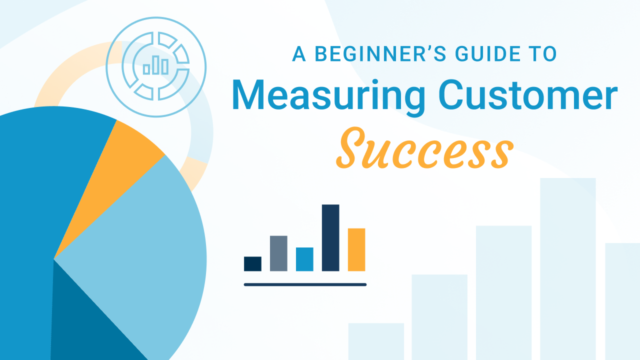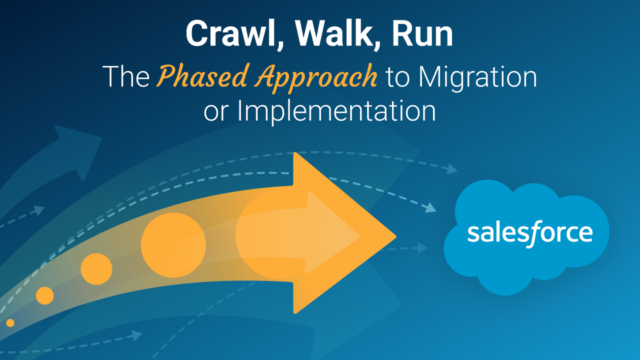I spent several years at Salesforce in Customer Success, focused on driving value via their Products, so it was a major perspective shift to move to the Services side of the organization in 2020.
Five years later, I’m working for CloudKettle, a specialized Salesforce Services company and am defining what Customer Success (CS) looks like in a “projects & people” world. Frankly, I feel like a beginner again. They say this isn’t a bad thing, and so far, I’m diggin’ it.
Regardless of what world you’re working (or living) in, when it comes to Customer Success, tracking the right metrics is critical for understanding how well you’re meeting customer needs and ensuring business growth. However, the metrics you focus on can look very different depending on whether you’re in a recurring revenue (Product-based) business or a non-recurring Services (People-based) business. Salesforce is often credited with pioneering ‘Customer Success,’ and I had a front row seat to learn their approach from both the Product and Services orgs.
Below, I’ve provided an overview of some key metrics for both. In the true “beginner’s spirit,” I’d love to read your comments on any metrics you’d add—and will happily duke it out with you, should you think some of mine don’t apply. You know, because we all know that beginner who thinks they’ve figured it out already. Ok…I kid, I kid (but still, let me know what you think).
Metrics With Recurring Revenue (Product & License)
In a Product & License model with recurring revenue (“Subscription Service”), the focus is on keeping customers around and making sure they get ongoing value from your product. On top of that, you’ve hopefully earned adequate trust, thus putting your company in a position to grow the customer’s investment. Here are the metrics that matter most (in no particular order):
1. Customer Retention Rate (CRR): This is the percentage of your customers that are renewing. The renewal could be flat, or an upgrade or downgrade, so long as they’re not leaving. Since your revenue relies heavily on ongoing subscriptions, keeping customers happy by driving value and preventing churn is pivotal. A high CRR means your customers are sticking around; they’re renewing year over year.
2. Net Revenue Retention (NRR): This tracks the percentage of recurring revenue you’re keeping or growing from existing customers. It considers upgrades, downgrades, and churn (just not net new $ from net new customers). If your NRR is high, it means customers aren’t just staying…they’re seeing real value, so they’re upgrading and/or expanding their use of your Product(s).
3. Customer Lifetime Value (CLV): CLV measures the total net profit you can expect from a customer over the course of your relationship. The longer they stay and the more they invest, the higher the CLV.
4. Churn Rate: Salesforce calls this one “attrition,” but “churn” has become the more commonplace term. Simply put, this is the percentage of customers who cancel their subscriptions. Keeping churn low is essential to growing a healthy business.
5. Product Adoption & Engagement: These metrics may vary greatly from one business to the next, but they would all typically show how much and how effectively customers are using your product. High adoption rates generally indicate that customers are deriving value, which ties directly to retention…and hopefully, investment growth. Some typical metrics Salesforce and other SaaS companies assess are login rates, monthly average users, specific feature adoption, and license utilization.
CS Metrics Without Recurring Revenue (Professional Services)
On the flip side, Pro Services organizations often work on a project basis via one-time engagements. Here, the focus typically shifts from long-term retention, to successful project delivery. Retainers, which are ongoing, renewable Services SOWs (and the heart of CloudKettle’s approach to Customer Success), are the exception. Here are the key metrics for this type of business:
1. Project Completion Rate: This metric tracks how often projects are completed on time and within budget. Successful Project delivery, paired with high customer satisfaction, may be the North Star of CS in the Pro Services world.
2. Client Satisfaction (CSAT): This is usually a 1 to 5 score that is derived from a Project Survey upon successful completion. Since each engagement is unique and customized, making sure your clients are happy with the outcome is a top priority. Positive feedback here can lead to future referrals or repeat business (more on that later). At Salesforce, this is the primary measure of a project’s success. Salesforce also helps Partners, like CloudKettle, by triggering surveys once a Partner completes a project. Scores are then tracked and Partners gain points toward their next Partner Tier (Base, Ridge, Crest, and Summit).
3. Time to Value: How quickly can your clients start seeing the results of your service? In Pro Services, clients expect fast, tangible results. The quicker you can deliver value, the better.
4. Repeat Business & Referrals: In a non-recurring model, the ability to secure follow-up work and/or gain referrals is a strong indicator of success. Happy clients are more likely to come back for additional projects or recommend your services to others.
5. Utilization Rate: This measures how efficiently your people (eg: Consultants or Project Managers) are having their allocated hours used. Higher Utilization typically means you’re getting the most from your team while delivering quality work. Most Services orgs (including Salesforce) actually tie a small part of the team’s compensation to utilization percentages.
Wrapping Up
Regardless of how your business makes money (recurring or non-recurring revenue), good Customer Success aims to drive positive business outcomes for its customer base. Perhaps that’s via increasing Product adoption and ensuring high License utilization…or maybe it’s delivering multiple Projects on time and under budget in the same year, thus being rewarded with a referral.
I hope I’ve been able to outline the key differences of CS in these two worlds, because if we understand these differences, then we can better tailor our Customer Success strategies to fit our business models, ensuring we meet our customers’ needs and drive sustainable growth.
And remember, at the end of the day, we’re all just people working with other people. In my experience, simply knowing what’s at stake for my customers, and trying hard to deliver for them, can sometimes make just as much difference as nailing any of the metrics in this blog.
But hey, I’m just a beginner. What do I know?
Want to chat about driving customer success – and making sure you’re looking at the right metrics? Get in touch! We love talking about this stuff.




